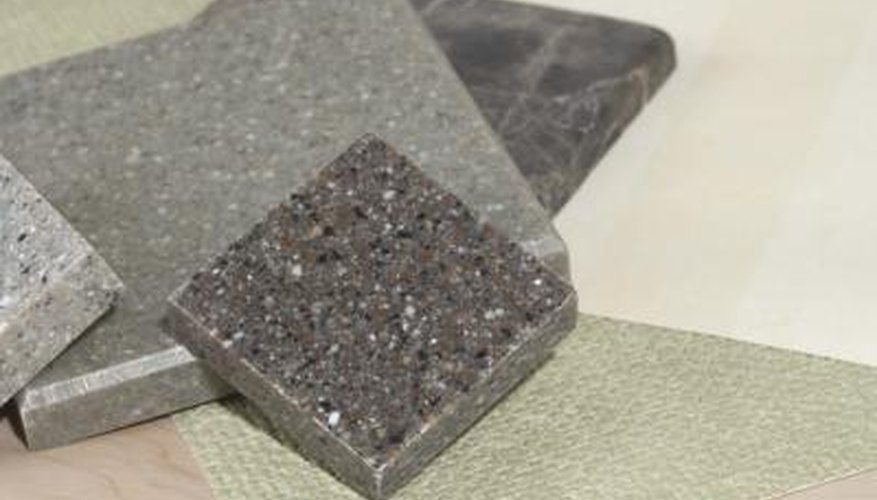When constructing a floor for passive solar use, or using a stone surface to keep bread warm while serving, it is important to know which kind of rock will retain heat the best. The ability to retain heat is a function of the stone's specific heat capacity and density. Another factor in choosing stone could be how quickly the stone transfers heat, called thermal conductivity. Put the stone's capacity to store heat together with thermal conductivity to find the stone that absorbs heat the best, and does it the quickest.
The Energy Density of Stone
The single most important characteristic of a stone that must retain heat is the measure of its specific heat capacity. The specific heat of a material is the amount of energy needed to raise one kilogram of material one degree centigrade.
The second most important characteristic of a stone used for absorbing heat is its density. For two stone materials with the same specific heat, the denser rock will be smaller and hold the same heat energy.
The energy density of stone is the specific heat multiplied by its density on a unit basis. This gives a number that shows how well a rock can store heat, if every rock is the same size. The stone with the highest energy density will have the greatest ability to absorb heat, for a given thickness or size.
- The single most important characteristic of a stone that must retain heat is the measure of its specific heat capacity.
- The stone with the highest energy density will have the greatest ability to absorb heat, for a given thickness or size.
Which Stones Absorb the Most Heat?

For common natural materials, the stones with the highest energy density (from high to low) are gypsum, soapstone, basalt, marble, limestone, sandstone and granite.
For common man-made materials used in construction, the stone with the highest energy density is fire brick, followed by asphalt, concrete and regular brick. Note that concrete made with basalt stone would have a higher energy density than one made with limestone.
Thermal Conductivity of Stone
Every material has the ability to transfer heat to a cooler material. The rate at which this occurs is called the thermal conductivity. Materials with a higher thermal conductivity transfer heat more readily. This is one reason why a marble floor feels cooler to bare feet than a wood floor, even though the two floors are at the same temperature.
If a stone has a high thermal conductivity, it will also transfer heat to a cooler place the quickest. This means the heat will be given up quickly, so this may not be a desirable trait for some applications. Often two types of stone are needed, one that stores heat well, and another that insulates.
- Every material has the ability to transfer heat to a cooler material.
- If a stone has a high thermal conductivity, it will also transfer heat to a cooler place the quickest.
What Stone Absorbs the Most Heat the Quickest?
Natural stones with high energy density and excellent thermal conductivity are soapstone (by far the best) and marble. These are perhaps the best stones for absorbing large amounts of heat quickly. Some types of granite can be good heat conductors, but are not great at storing heat.
- Natural stones with high energy density and excellent thermal conductivity are soapstone (by far the best) and marble.
- Some types of granite can be good heat conductors, but are not great at storing heat.
Although Gypsum holds heat well, it acts more like an insulator than a conductor of heat. Basalt, although excellent at holding heat, transfers heat slowly.
For man-made construction materials, the materials with the highest thermal conductivity and good heat density are lightweight concrete and fire brick. Note that the best natural materials are far better than these two man-made materials at heating quickly and then storing the heat.
